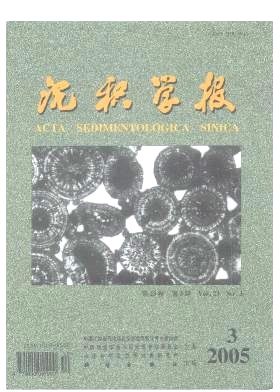Character istics of Diagenetic Evolution of Chang 4 + 5 Sandstones ( Upper Triassic) in Yanchi-Jiyuan Area, Ordos Basin and Distribution of High-Quality Reservoir
- Received Date: 2005-02-28
- Rev Recd Date: 2005-05-21
- Publish Date: 2005-09-10
-
Key words:
- diagenesis /
- sedimentary-diagenetic facies zone /
- high quality reservoir /
- Triassic series /
- Ordos basin /
Abstract: Chang 4 + 5 sandstones of Yanchang Formation in Yanchi-Jiyuan area are mainly composed of platform-type and slope-type delta front sandbodies. Lithic feldspathic and feldspathic sandstones are chief rock types, of which the average content of quartz, feldspar and rock fragments are 24.7%, 43.2% and 10. 0%, respectively, and meta-morphic and igneous fragments are dominant constitutes, accounting for 88. 0% of total fragment content. At present, these sandstones are in the late period of the Early diagenetic B stage (Ro = 0. 8% and T = 70290℃), so they are under the control of acidic diagenetic environment, being of abundant secondary dissolution porosity. On the basis of the statistics of sandstone compositions, it is indicated by the quantitative calculation that compaction is the dominant reason for the loss of the primary porosity in the study area, and next cementation, whereas the increasing ratio of porosity caused by the dissolution is relatively small ( < 10%). In combination with the results of sedimentary facies, three types of sedimentary-diagenetic facies zone could be divided, i. e. slope-type delta front-chlorite film primary porosity facies, slope-type delta front-late ferrous calcite cemented secondary porosity facies and platform delta front late ferrous calcite cemented facies, and the favorable reservoir facies ismainly distributed in the joint area of the former two facies zones.
| Citation: | WANG Qi, ZHUO Xi-zhun, CHEN Guo-jun, SHI Ji'an, WANG Duo-yun. Character istics of Diagenetic Evolution of Chang 4 + 5 Sandstones ( Upper Triassic) in Yanchi-Jiyuan Area, Ordos Basin and Distribution of High-Quality Reservoir[J]. Acta Sedimentologica Sinica, 2005, 23(3): 397-405. |






 DownLoad:
DownLoad: